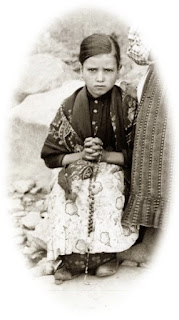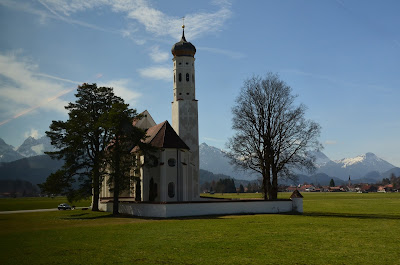Double (1954 Calendar): April 2nd
St. Francis was born to parents who were childless for many years. Yet the parents pleaded through the intercession of St. Francis of Assisi that they should be given children by God. And so their prayers were heard. They had three children, of which St. Francis of Paola (Paula) was one of them.
As a young boy, St. Francis journeyed to Rome on a pilgrimage to Rome and Assisi and decided to followed the will of God and become a hermit. Before he was even 20 years old he began to attract followers and thus founded the Hermits of Saint Francis of Assisi, who were approved by the Holy See in 1474. In 1492 they were renamed the Franciscan Order of Minim Friars, with the use of "Minim," it meant that they counted themselves as the least worthy of those in the household of God.
St. Francis was regarded as a miracle worker, prophet, and defender of the poor. In 1464 St. Francis wanted to cross the Straits of Messina to reach Sicily, but a boatman refused to take him. St. Francis responded by laying his cloak on the water, tying one end to his staff to make a sail, and then he proceeded to sail across with his companions. Franz Liszt wrote a piece of music inspired by the incident.
At the request of Pope Sixtus IV, he journeyed to Paris and helped Louis XI prepare for death. He also used his position to help restore peace between France and Brittany by advising a marriage between the ruling families and between France and Spain by persuading Louis XI to return some disputed land.
St. Francis had a love for animals and took a vow to never eat any animals, even fish. According to his biographers, it is said: "Francis had a favorite trout that he called ‘Antonella.’ One day, one of the priests, who provided religious services, saw the trout swimming about in his pool. To him it was just a delicious dish, so he caught it and took it home, tossing it into the frying pan. Francis missed ‘Antonella’ and realized what had happened. He asked one of his followers to go to the priest to get it back. The priest, annoyed by this great concern for a mere fish, threw the cooked trout on the ground, shattering it into several pieces. The hermit sent by Francis gathered up the broken pieces in his hands and brought them back to Francis. Francis placed the pieces back in the pool and, looking up to Heaven and praying, said: ‘Antonella, in the name of Charity, return to life.’ The trout immediately became whole and swam joyously around his pool as if nothing had happened. The friars and the workers who witnessed this miracle were deeply impressed by the miracle."
St. Francis also raised his pet lamb from the dead after it had been killed and eaten by workmen. "Being in need of food, the workmen caught and slaughtered Francis’ pet lamb, Martinello, roasting it in their lime kiln. They were eating when the Saint approached them, looking for the lamb. They told him they had eaten it, having no other food. He asked what they had done with the fleece and the bones. They told him they had thrown them into the furnace. Francis walked over to the furnace, looked into the fire and called ‘Martinello, come out!’ The lamb jumped out, completely untouched, bleating happily on seeing his master."
St. Francis of Paola died on Good Friday, April 2, 1507, in Pelssis, France. He died as the Passion, according to St. John, was read to him. He was canonized in 1519 by Pope Leo X. Tragically, in 1562, Huguenots (Protestant heretics) broke open his tomb, found his body incorrupt, and burned it; the bones were salvaged by Catholics, and distributed as relics to various churches.
The Influence of the Minims on Beer
The Minims went out to continue long after St. Francis of Paola passed to Heaven.
“In the early 1600s, Paulaner friars of the Order of Minims moved from Southern Italy and settled in the monastery Neudeck ob der Au in Bavaria. The friars observed a strict ascetic lifestyle, living in perpetual abstinence from all meat and dairy products. This ‘Lenten way of life,’ termed vita quadragesimalis in Latin, is a distinct character of the Order of Minims. Because they already observed a Lenten lifestyle year-round, they invented a beer only diet for Lent as a special fast beyond what they already observed.
“In 1634, the Paulaner friars came up with a special brew, so malty and rich they could sustain themselves on it alone for the entire 40 days of Lent. The “liquid bread” as they called it, was full of carbohydrates and other nutrients, with the idea being that liquids cleanse both body and soul. It was a common belief that the more “liquid bread” one consumed, the more purified they would be for Lent.
“The doppelback, as it is called in German, was quite strong for its time, and people occasionally got drunk off it. When the friars recipe improved, they feared the beer was too tasty and intoxicating to be drunk during Lent.
“Around the year 1700, they sent a barrel to the pope asking for his opinion. However, on its travels through the Alps and through the hot Italian sun, it went foul and the pope received a flagrant concoction that resembled nothing of the original brew. After tasting it, the pope sent a message that the disgusting liquid would most definitely help cleanse the friars of their sins, and so the Order of Minim’s tradition of leitenbock was born: 40 days without solid food, drinking only water and beer.”
Collect:
O God, the exaltation of the lowly, who hast raised Thy blessed Confessor Francis to the glory of the Saints; grant, we beseech Thee, that by his merits and example we may happily obtain the rewards promised to the lowly. Through Our Lord . . .





.jpg)


































